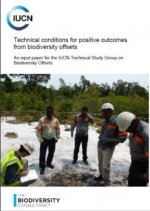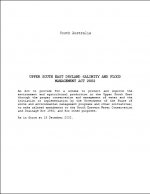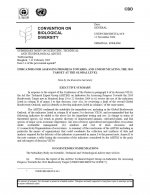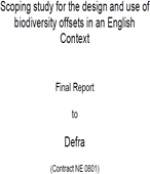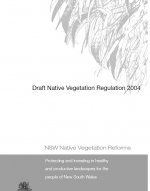Biodiversity Offset Design Handbook Appendicies – 2009
BBOPThis companion volume of Appendices to the BBOP Offset Design Handbook offers readers a summary of a sample of methodologies relevant to biodiversity offsets and some references on them for further reading. Some approaches are required or recommended by government policies; some are the subject of the lending requirements of banks; some are still under […]
Technical conditions for positive outcomes from biodiversity offsets
An input paper for the IUCN Technical Study Group on Biodiversity Offsets
John Pilgrim, Jonathan Ekstrom - The Biodiversity Consultancy, The Biodiversity ConsultancyWe assess the conditions under which biodiversity offsets benefit biodiversity and achieve no net loss, asking two key questions: i. Under what conditions do biodiversity offset approaches provide positive outcomes for biodiversity, irrespective of the concept of no net loss? ii. Under what conditions is it possible to achieve no net loss through the implementation […]
Natural Alliances between Conservationists and Indigenous Peoples
Michael Painter, Kent Redford - WCS, WCSThe survival of both indigenous peoples and much of what remains of nature lies in the ability of both sides to find common ground. However, parks and protected areas have become the focus of conflict between conservationists and indigenous peoples. This antipathy is based on differing views about the nature of human impact on the […]
Upper South East Dryland Salinity and Flood Management Act 2002
Government of AustraliaAn Act to provide for a scheme to protect and improve the environment and agricultural production in the Upper South East through the proper conservation and management of water and the initiation or implementation by the Government of the State of works and environmental management programs and other initiatives; to make related amendments to the […]
A Representative Sample of all Biodiversity Pattern
Kristal MazeWe need to conserve a representative sample of all biodiversity pattern (representation), ecological processes (persistence), and critical natural capital values.
Indicators for Assessing Progress Towards, and Communicating, the 2010 Target at the Global Level
In response to the request of the Conference of the Parties in paragraph 6 of its decision VII/30, the Ad Hoc Technical Expert Group (AHTEG) on Indicators for Assessing Progress Towards the 2010 Biodiversity Target met in Montreal from 19 to 22 October 2004 to (i) review the use of the indicators listed in column […]
Scoping Study for the Design and Use of Biodiversity Offsets in an English Context
Final Report to Defra
Treweek et al. 2009In 2007, the UKs Department for Environment, Food and Rural Affairs (Defra) identified the need to explore new policy options, including market creation in biodiversity or incentives for biodiversity such as biodiversity offsets, particularly to reduce rates of loss of non-designated sites and features. In 2008, Defra commissioned a scoping study for the design and […]
The Role of Monitoring and Compliance in Securing Better Biodiversity Outcomes through Offsetting Arrangements
Dr Matt Baber - Tonkin & TaylorThis report investigates the role of monitoring and compliance in securing better conservation outcomes through biodiversity offsetting arrangements under the Resource Management Act. The report provides: * an overview of the resource consent monitoring purpose and process under the RMA; * an assessment of the resource consent monitoring process in relation to biodiversity offsets; * […]
Estándar sobre compensaciones por perdida de Biodiversidad
BBOPSpanish translation of BBOP Standard
Draft Native Vegetation Regulation 2004
Government of AustraliaThis Regulation is the Native Vegetation Regulation 2004. In this Regulation: development consent means development consent required by the Act for the cleaning of native vegetation.



